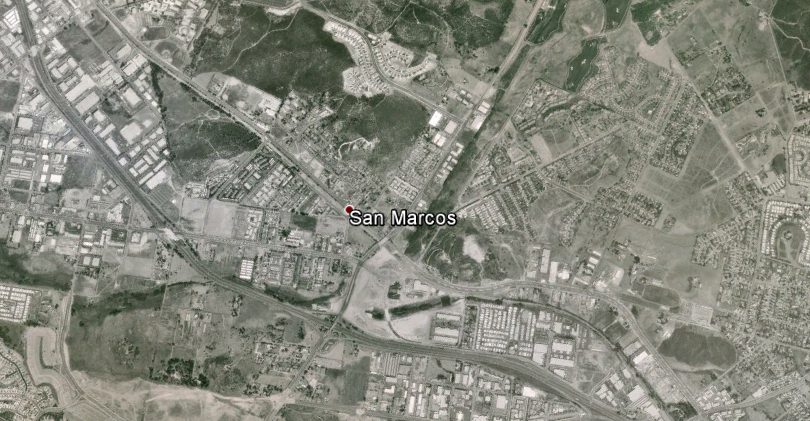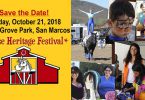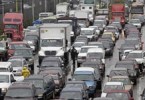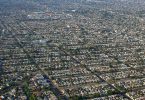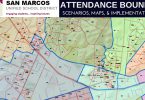Read an interesting LA Times article from 1990 about a growing San Marcos. There are neat references to Palomar College, Cal State San Marcos, the sprinter, the first stages of Santa Fe Hills, Vista and Escondido and more.
For a bit of context, the population of San Marcos in 1990 was 33,835 (compared to 93,000 today). There was no Santa Fe Hills, no San Elijo Hills, no Grand Plaza, no 78/Las Posas interchange, no Cal State San Marcos.
Below are several excerpts from the article:
San Marcos Goes to Town : Small Community Lays Big Plans Based on New University and City Hall
January 28, 1990, TOM GORMAN, latimes.com
- San Marcos, perhaps best known historically for its dairy farm, chicken ranch, rock quarry and wholesale nurseries, is quickly and clearly maturing. The town is like some skinny little country boy sprouting in his adolescence with signs of sophistication and brawn and a vision of what he’s going to be when he grows up and moves off the farm.
- When San Marcos incorporated in 1963, the first City Hall was upstairs from the mayor’s barber shop–plenty large enough during the first year of municipal autonomy to house the one and only city employee. The second–and current–City Hall is a modular building that previously was used as an Escondido bank office.
- Hodgepodge development during the 1970s saw generally small and unspectacular housing tracts and apartment developments, strip commercial development and mom-and-pop manufacturing and industrial businesses housed in metal-sided buildings alongside California 78, which runs through the middle of town like an unwanted varicose vein.
- Indeed, San Marcos was the fastest-growing city in San Diego County during the 1980s, nearly doubling in population from 17,479 residents in 1980 to 33,835 last January. That 93.6% population increase led North County’s tumultuous growth in the ’80s, which saw Carlsbad grow by 74.8%, Vista by 72.3% and Escondido by 53.8%.
- The first settler, Army Maj. Gustavus Merriam, came in 1875. He was a Civil War veteran who left his general store in Kansas in favor of this area’s drier climate for the sake of his wife’s tuberculosis. Merriam settled in the northern reaches of the Twin Oaks Valley, where he planted a sprawling vineyard, grazed cattle and raised bees.
- By 1960, piped-in water from the Colorado River arrived in San Marcos, and the population jumped to nearly 10,000–a fivefold increase over 10 years.
- In 1963, while Escondido to the east and Vista to the west began annexing toward one another, San Marcos in the middle decided to incorporate out of self-defense.
- The building protocol in San Marcos was again amended: Today, a developer can build as many homes as local zoning laws permit–as long as he pays for the streets, parks, schools and police and fire protection needed to serve the new residents.
- The first builder to take the city up on its offer was the Baldwin Co., which is building 1,550 single-family homes near Palomar Community College. Project manager Cindy Shaffer estimates that each homeowner will pay between $1,700 and $2,000 a year in fees for up to 30 years to finance, among other things, a new community park, an elementary school, a fire station and the added cost of police protection required by the new residents. “San Marcos is supportive of development as long as it pays its fair share for the necessary public facilities,” she says.
- Two hospitals–Kaiser and Scripps Memorial–are already considering building medical facilities in the university neighborhood.
- The university hasn’t made up its mind what academic direction to take, but its president, Bill Stacy, says it’s clear in either case that the emerging town-and-gown partnership between the city and the school will benefit both.
- San Marcos will probably never have a downtown, Thibadeau says. Instead, officials talk of the “heart of the city,” a long-range commercial, professional office and residential development plan that will be anchored, on the north, by the new City Hall and, on the south, by the new university campus.

